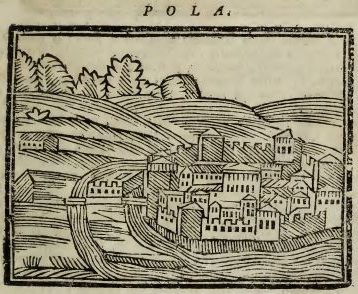Conflict of Interest Commission Looking Into Parliament Speaker Jandroković
ZAGREB, 5 Feb 2022 - The chair of the Conflict of Interest Commission, Nataša Novaković, said on Friday they were looking into media reports concerning Parliament Speaker Gordan Jandroković.
"The Commission is investigating facts concerning Mr Jandroković, and that's all I can say. I can't go into details. We are focusing on everything that has been published in the media, the relevance and truthfulness of those reports," Novaković told Nova TV.
The Commission is investigating the link between Jandroković and businessman Vedran Gajski. Jandroković has confirmed that Gajski contacted him because he was paying rent to the Državne Nekretnine state property management company for business premises that were not connected to the power grid and that Gajski then contacted the then state secretary in charge of state property, Krunoslav Katičić, and informed him of the problem.
Novaković said that the Commission is also gathering facts regarding the case of the prime minister's chief of staff Zvonimir Frka Petešić, after which they will decide on further steps.
The Commission is also looking into the case of Defence Minister Mario Banožić.
Nova TV said that Vanja Bilić, former assistant justice minister in the government of Zoran Milanović, had used a state-owned apartment even though he had a permanent address in Zagreb at the time.
Croatia Winter Olympics Schedule: 11 Croatian Athletes Competing in Beijing
February 5, 2022 - A look at the Croatia Winter Olympics schedule as 11 Croatian Olympians compete in Beijing this February until February 20.
Croatia has a total of 11 representatives at this year's Winter Olympics, which are being held in Beijing from February 4 to 20, 2022, reports Gol.hr.
Four male athletes and seven female athletes will compete in four sports: alpine skiing, cross-country skiing, snowboarding, and speed skating.
Croatia's skiers in Beijing are Filip Zubčić, Matej Vidović, and Samuel Kolega, and female representatives Leona Popović, Zrinka Ljutić, and Andrea Komšić. Vedrana Malec, Tena Hadžić, and Marko Skender will represent Croatia in cross-country skiing. The only Croatian speed skater at the Winter Olympics will be Valentina Aščić, and the only snowboarder Lea Jugovac.
Schedule for Croatian athletes:
*all listed hours are according to Croatian time
February 5 (speed skating, qualifications in the 500 meters - Aščić)
12:00 race start
February 5 (snowboard, slope qualifications - Jugovac)
03:45 start of the competition
February 7 (women's giant slalom - Popović, Ljutić, Komšić)
3:15 first run
6:45 second run
February 8 (cross-country skiing, men, individual sprint - Skender)
9:00 race start
February 8 (cross-country skiing, women, individual sprint - Malec, Hadžić)
9:00 race start
February 9 (women's slalom - Popović, Ljutić, Komšić)
3:15 first run
6:45 second run
February 10 (cross-country skiing, men, 15 km classic - Skender)
8:00 race start
February 10 (cross-country skiing, women, 10 km classic - Malec, Hadžić)
8:00 race start
February 13 (men's slalom - Zubčić, Vidović, S. Kolega)
3:15 first run
6:45 second run
February 14 (cross-country skiing, men, 50 km freestyle - Skender)
7:00 race start
February 14 (snowboard, qualifications in big air - Jugovac)
2:30 start of the competition
February 16 (men's giant slalom - Zubčić, S. Kolega)
3:15 first run
6:45 second run
February 16 (cross-country skiing, women, team sprint - Malec, Hadžić)
10:00 race start
February 16 (speed skating, finals in 1500 meters - Aščić)
12:30 race start
February 20 (cross-country skiing, women, 30 km freestyle - Malec)
7:30 race start
Beijing is the first city to host the summer and winter editions in the history of the Games. About 2,900 athletes from about 90 countries will compete this month.
In the three Olympic zones - Beijing, Yanqing, and Zhangjiakou, there are 13 competition destinations, where 109 sets of medals will be distributed in seven sports branches consisting of fifteen sports and disciplines. The Beijing Winter Olympics is also the most balanced Winter Olympics to date (55% male and 45% female representatives).
To read more about sport in Croatia, follow TCN’s dedicated page.
‘The Cathedral Isn’t Ugly’: Impressions of Croatia in Travel Journals of Yore (I)
February 4, 2022 - Long before the dawn of tourism, pilgrims, artists, scholars and adventurers of all kinds made their way down the Croatian coast. Many foreign travellers recorded their impressions along the way, leaving behind a treasure trove of travel journals for us modern folk to peruse and enjoy just how much some of the writings resemble online reviews of the present day. Exploring the predecessors of Trip Advisor, starting with a few thoughts on Istria
Most of us can’t help but love travel content. In the present age, especially since a certain issue made it quite difficult to travel, we explore the world through Facebook posts, Instagram stories and travel blogs.
It’s only a modern take on a very old phenomenon: travel journals, a fairly popular form of literature in which travellers recorded their impressions of all the places they visited.
The Croatian coast played a major role in travel literature from the 15th century onwards. The powerful status of Venice and its location on the Adriatic made it a focal point of every itinerary; travellers either embarked from Venice or passed through it on their way southeast. As Venice ruled the Croatian coast until the end of the 18th century, its major cities such as Zadar or Trogir were essentially must-visit destinations for every person that travelled by sea.
Some were pilgrims on their way to the Holy Land, some were artists capturing breathtaking landscapes and grand classical monuments. Most travel journals include detailed descriptions of the places visited, their geographic position and historical background, architectural landmarks of special importance…
…and food, and wine, and women. It’s Croatia, after all, and while it doesn’t come as a surprise, it’s delightful to read about someone fawning over olive oil or the beauty of Dalmatian women centuries ago.
Back in college, I studied quite a few such journals for a paper on architecture, and I recall having a laugh every time a 17th century 'tourist' opted to ignore the landmarks and mused where to buy wine instead. Detrimental to my paper, but quite fun to read - and having a different outlet now, perhaps it’s time to bring those moments to light as well. After all, travellers in history weren't that different to us today: they took in the sights, sampled the local cuisine and took interest in locals and their customs. And of course, followed it all with colourful commentary.
***
We’re starting our trip in Istria, retracing the steps of French archaeologist Jacob Spon, who stopped in Rovinj on his way from Italy to Greece in 1675:
Rovinj is a small town (...) where the land is rich in vines and olive trees. The wine is good, and I believe that to be the reason why you see so many lame people around, because strong wine is the father and the fosterer of gout and sciatica. The women wear hoop skirts in Spanish fashion which make them look appalling.
Says this man:
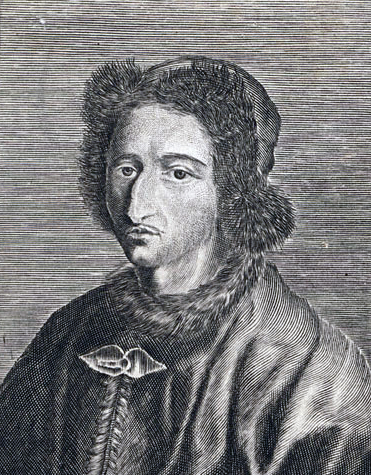
Looks thorougly unimpressed - alright.
On to Pula, where Spon maintains the same level of snark:
At present it has seven or eight hundred inhabitants at most, and if it weren’t for the remnants of its ancient grandeur, no one would believe this used to be a Republic, as I learned from an inscription carved into the base of a statue of emperor Severus, where it’s referred to as Respublica Polensis.
To be fair, I can see where Spon is coming from, as Pula wasn’t exactly a lively town in the 17th century. After the fall of the Western Roman Empire, the city gradually sank into ruin, ravaged by one attacking force after another, as well as several deadly diseases that decimated the population. It was only in the 19th century when Austria took hold of Pula that the city finally began to thrive after centuries of neglect.
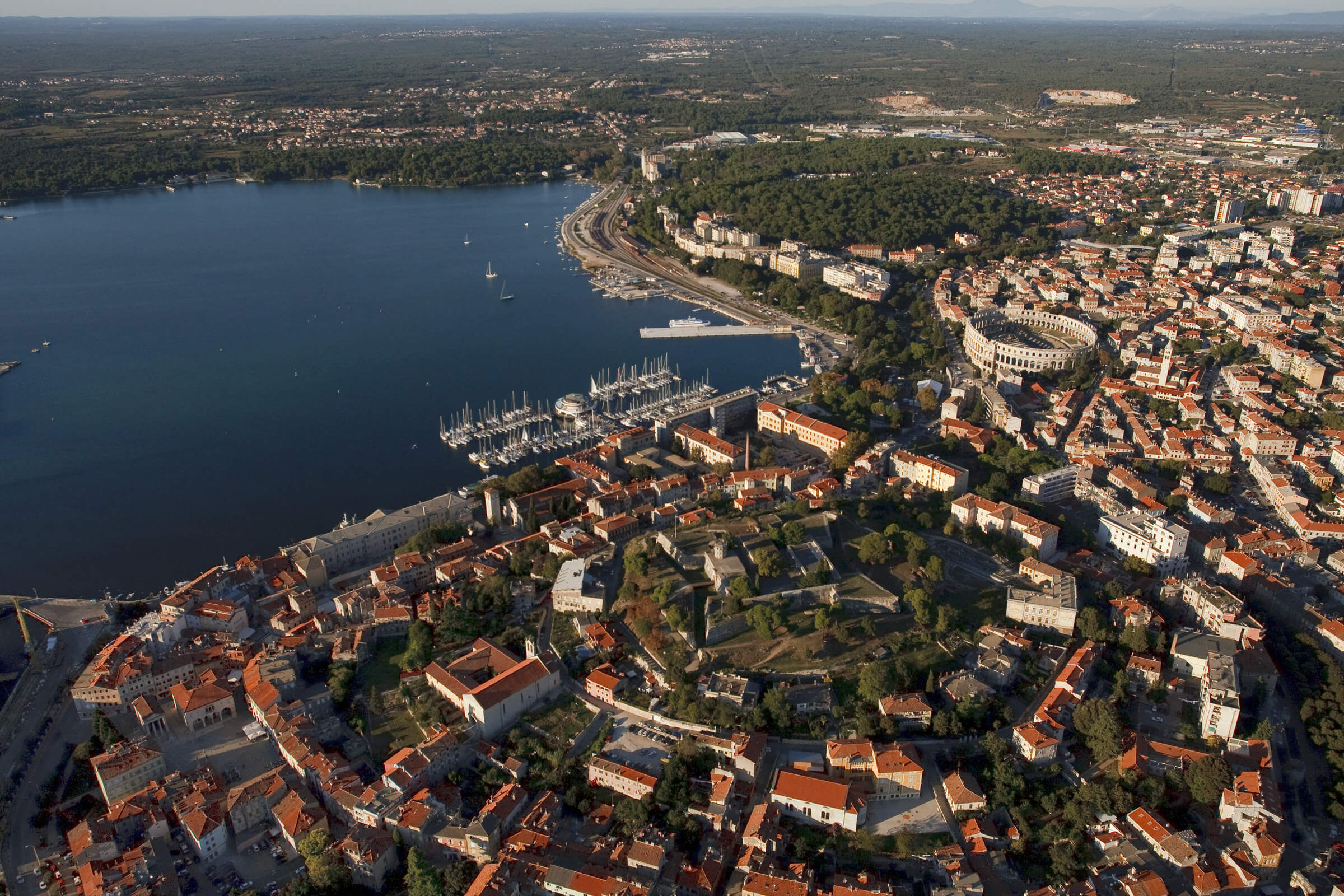 Pula by Romulic and Stojcic
Pula by Romulic and Stojcic
But I’m getting ahead of myself; first, another visitor in the 1770s, a friar named Noé Bianchi who made a stop in Pula on his pilgrimage to Jerusalem. Much friendlier than Spon, he records a short yet favourable impression of the Istrian city:
It was a very noble and royal city in the past; in it resided an Emperor of Rome who had a beautiful castle built, which is now ruined but a piece of it is still visible, and some beautiful tombs still remain, sculpted in very good marble. Here we stayed for four days waiting for calm seas and good wind, then we left for our voyage and arrived in Zadar.
Slightly reminiscent of a third grader recounting his summer adventures for a back-to-school assignment. I’m a bit unclear on whether Bianchi simply referred to the amphitheatre in Pula as a castle/fort, or if he failed to notice the gigantic edifice at all in the four days he spent in town. Perhaps the latter, as we don’t see the arena in this little tableau he made:
Giuseppe Marcotti didn't make the same faux pas upon his visit to Pula in the late 19th century. A prolific Italian writer and journalist, Marcotti gives an account of the Croatian coast in his work ‘The Eastern Adriatic: From Venice to Corfu’ that is so incredibly detailed, it reads more as a modern travel guide. It’s complete with train schedules and prices, lists of hotels and, most importantly, restaurant recommendations.
At the time of his visit, Pula was thriving under Austro-Hungarian rule as their main naval base. Marcotti notes the city is teeming with armed forces, but points to something else as Pula’s most captivating feature:
…despite the imposing ensemble of armoured towers, forts, batteries, embankments, barracks, gunpowder magazines, warehouses, factories, artillery and ammunition depots, and bays full of warships; in spite of the arsenal, all the armament and military equipment, the monuments to Roman grandeur in Pula are so remarkable, it’s them that attract the traveller’s attention above all else.
Poetic - love it.
Marcotti provides a comprehensive account of every nook and cranny from Umag to Dubrovnik, including some towns and villages not often visited in his time.
Novigrad, for example, apparently wasn’t as pretty of a sight as it is today:
Poverty and decadence are the essence of this place: carved stone and Roman tombstones were used to build small rustic houses; medieval fortifications were adapted into petty dwellings. (...) These days, the quiet port only serves as refuge from bad weather, and people only work at the stone quarries.
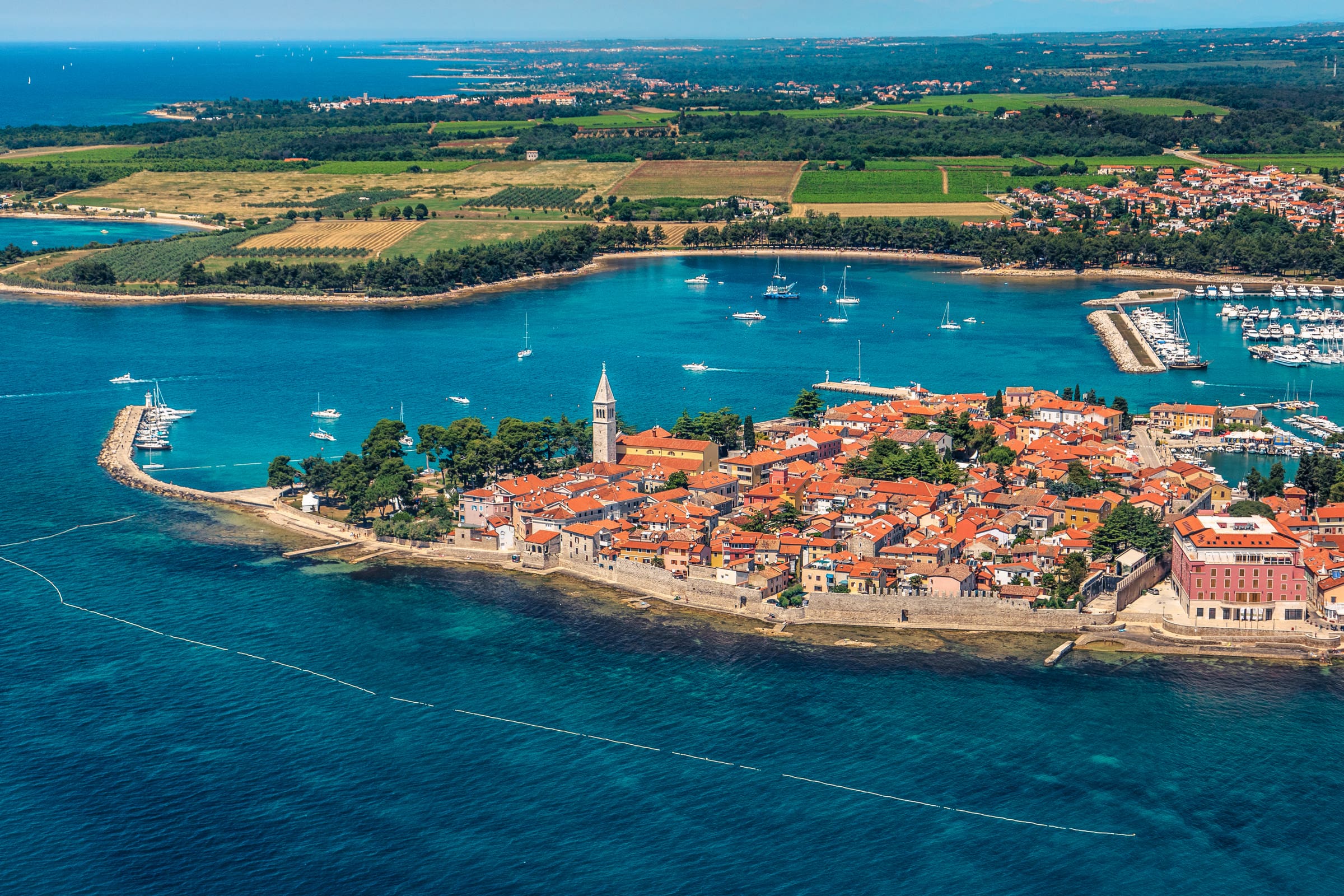 Novigrad by Romulic and Stojcic
Novigrad by Romulic and Stojcic
Let’s see what he thinks about a couple of other places in Istria - see if you can spot a common denominator in some of his impressions:
Rovinj - The labyrinth of alleys leading to the cathedral, snaking between humble houses bristled with colossal, bizarre chimneys like those in Venice, is abuzz with an energetic, fiery population which always gave the best among excellent Istrian sailors. The women appear to be a refined group of brunettes in the Venetian type; they speak, look, dress and walk as they do in Venice, typically wrapped in black scarves: their dialect is not without some Neapolitan inflection.
Vodnjan - The women inspire admiration, their distinctive beauty being that of the Latin type, with elegant limbs, well-shod and well-dressed and well-coiffed in their special attire, in many ways similar to the famous Arlesiennes of Provence - and also deserving of attention are the wedding customs, religious processions, dances and other popular festivities.
What about the men, Marcotti? We'll never know.
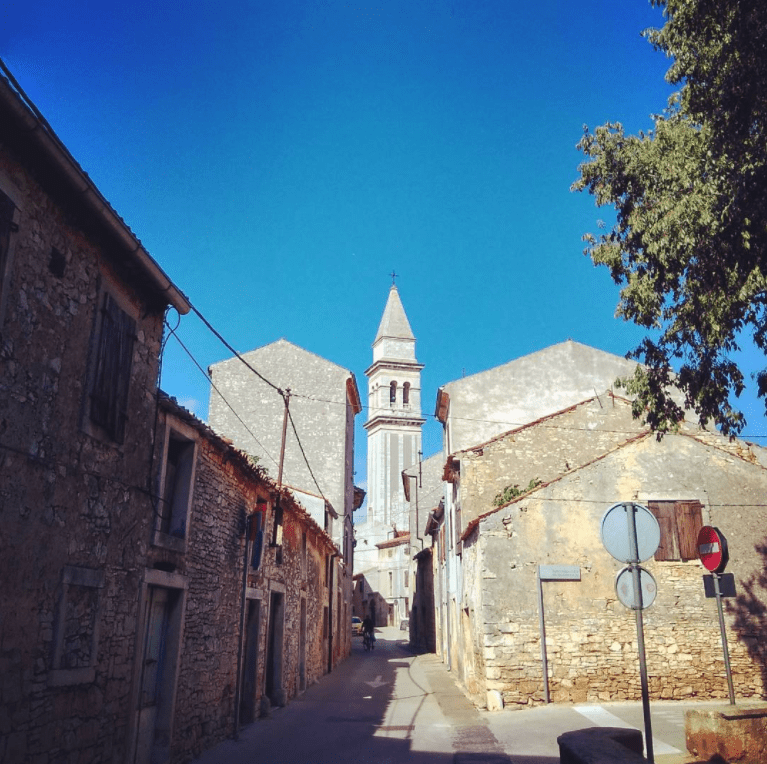
Marcotti also warns you’ll have some trouble with logistics if you have your heart set on island hopping:
If you wish to visit the islands as well as the most interesting places on the mainland, you should keep it in mind that, despite the numerous steam liners of the Lloyd and the Hungarian-Croatian Society, the services are not so scheduled that you could avoid wasting a week. For this reason, and to make your stay more comfortable, it is more practical to go to Rijeka with a direct steamer from Pula (or by rail from Trieste), and then take various trips from Rijeka to visit places on the coast of Istria, Kvarner, Croatia and the islands that are discussed in this guide.
**
And finally, Pag, an island known for many things: its cheese, lamb, salt, lace, and the otherworldly landscape that is said to resemble the surface of the Moon. Although Pag isn’t part of Istria and Kvarner, we'll cheat a bit as it's a good point between the Northern Adriatic and Dalmatia to end this piece with.
A lengthy description of Pag comes from Alberto Fortis, an 18th-century Venetian monk, writer and cartographer who travelled in Dalmatia and recorded his impressions in a series of letters to his esteemed acquaintances, published in the 1770s as a work titled 'A Journey to Dalmatia' (Viaggio in Dalmazia).
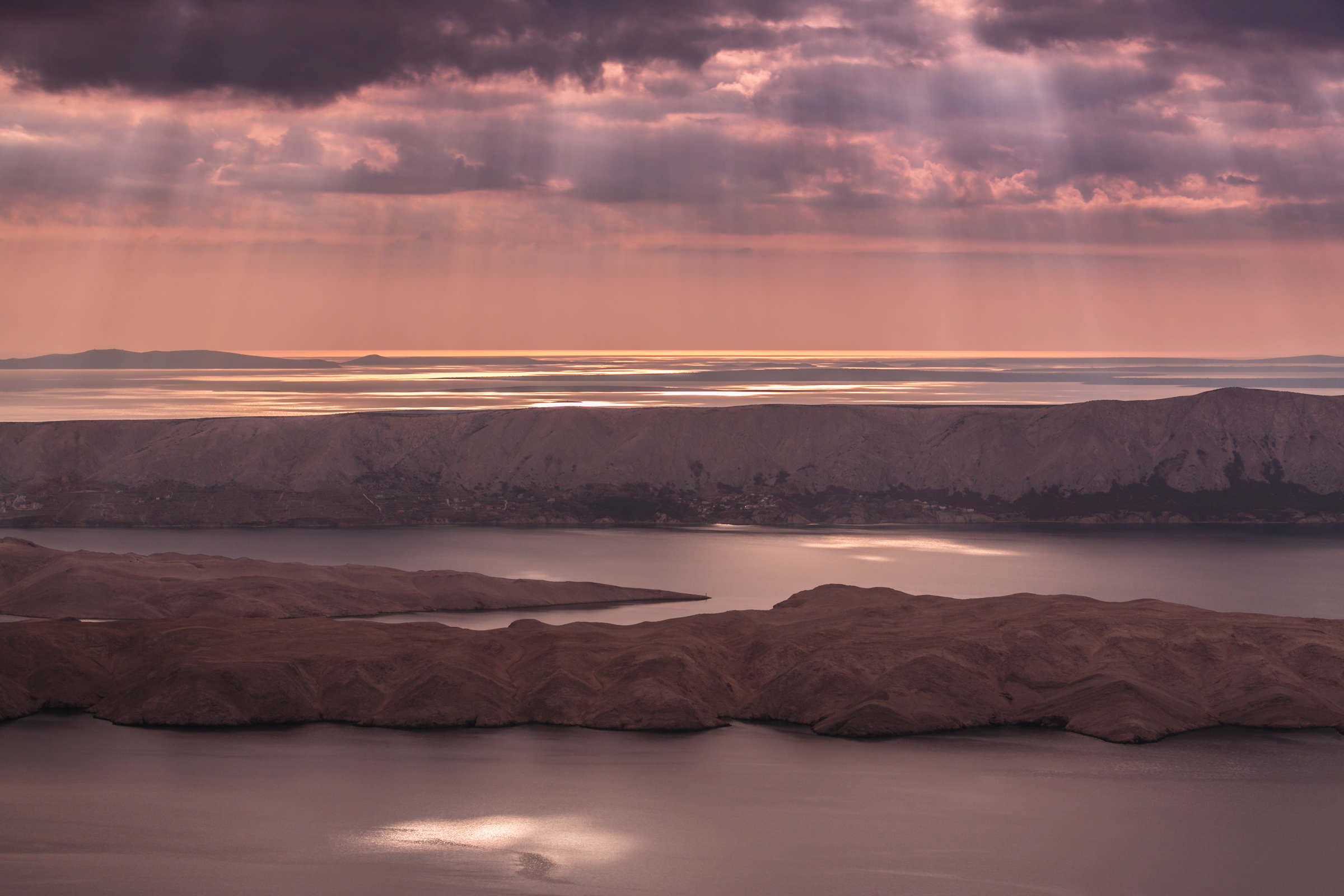 Pag by Romulic and Stojcic
Pag by Romulic and Stojcic
Fortis was a meticulous observer and his writing detailed and extensive; as such, his letters are a phenomenal source for anyone interested in the history of Dalmatia. He gives a comprehensive account of Pag’s history, demographics, climate, economy, culture and so forth; the bulk of it is level-headed and mostly neutral, but towards the end, Fortis brings down the hammer, leaving only scorched Earth in his wake:
People’s conduct on Pag is quite uncivilised, and superstition reigns among them. (...) I haven’t found a single medallion, inscription, manuscript, nor a single sensible man in this entire town; they’re all interested in salt harvesting and whoever doesn’t talk about salt is given little regard.
They say the island’s been abandoned on several occasions, and truly, one should sooner be amazed it’s inhabited in the first place, as the lucrative salt factories are the sole thing that could inspire people to live in such a joyless place.
Ouch.
He goes on, this time in more detail:
Owing to difficulties that arise on the journey to Pag town and inadequate accommodation that foreigners come across, this place is very poorly visited. Thus its inhabitants are brutish and rude, as if they lived at the farthest possible distance from the sea and didn’t trade with decent folk. Noblemen who are under the impression they carry themselves differently than the common folk are truly laughable characters, with their attire and habits and insulting boasting. The clergy’s ignorance is unbelievable; a priest of the highest rank, believed to be a learned man, didn’t know the Latin name for Pag.
Fortis continues to fire on all cylinders, next turning his attention to folk beliefs in a criticism heavily underlined with contempt for the local clergy. Keeping in mind he was a clergyman himself, this was very 18th-century-enlightenment of him:
The majority of Pag’s population makes a living from sea salt harvesting and is paid well by the Government, which is why dry summers are of great importance to the town’s inhabitants, so much so that the uneducated folk believe the rain to be a pestilence brought upon their land by some sorcery. In line with this belief, they choose a friar to drive away the evil spirits and turn the rain away from the island. If, in spite of the poor friar’s efforts, the summer turns out to be rainy, he loses his reputation and his living; but if two or three summers in succession just so happen to be dry, the friar earns considerable respect and benefit.
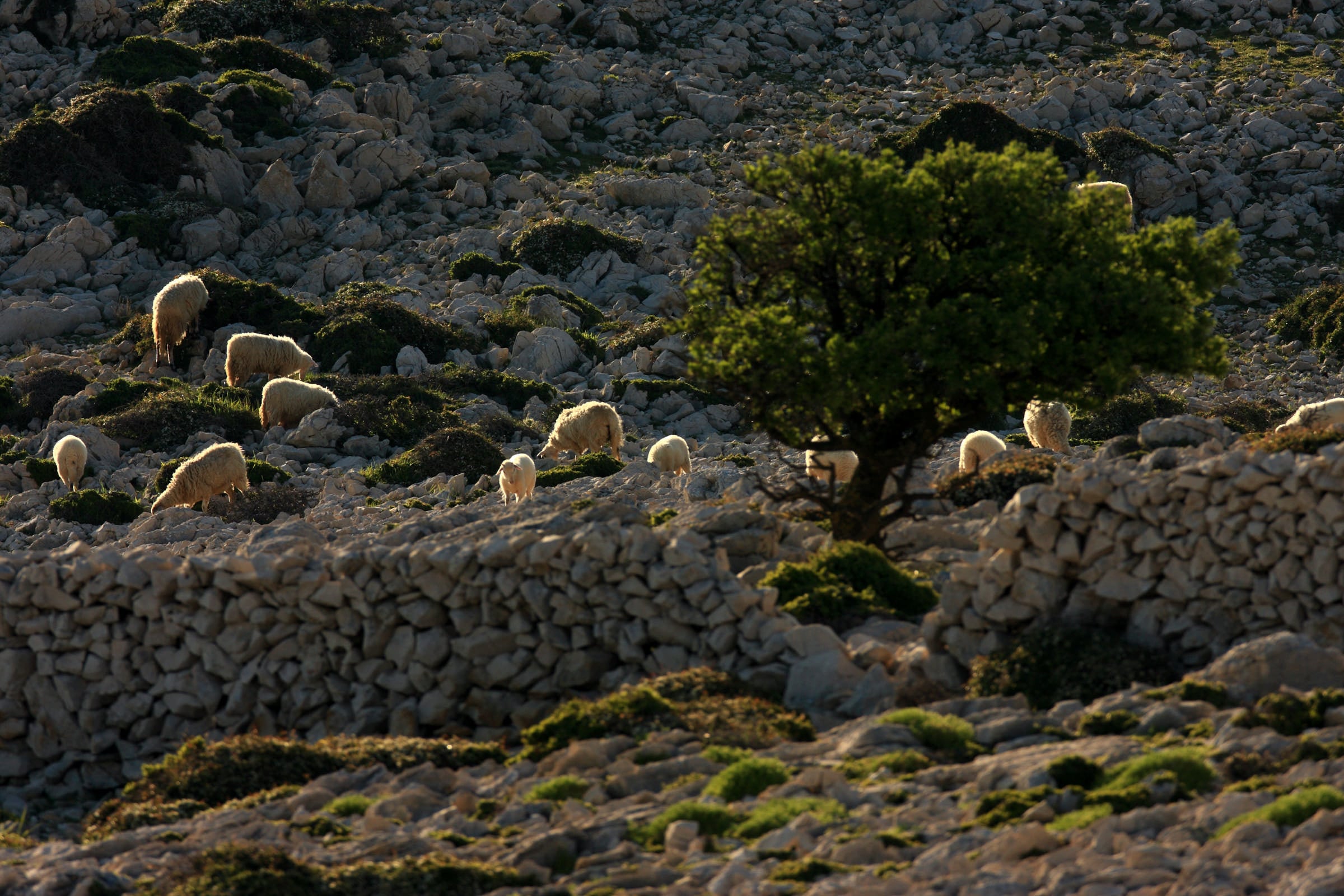 Pag by Romulic and Stojcic
Pag by Romulic and Stojcic
In Novalja, where they deal in something different to salt harvesting, they employ equally ridiculous means to summon rain as their neighbours do in trying to keep the weather dry. There’s no end to superstitious beliefs among those poor uncivilised island folk, beliefs that are mostly encouraged and supported by friars for their own gain, and sometimes for a more nefarious purpose, but since not much good can be accomplished by bringing up folk nonsense or the wickedness of the clergy, I will leave them in peace such as they are.
1/10, would not recommend? This would be a tough act to follow, so we’ll leave it at that, much like Fortis left the Pag folk in peace… after shredding them to bits.
Next up: Dalmatia! We’re heading to Zadar, Trogir, Split and a few southern islands to see what the travellers of yore thought about some of the most popular tourist destinations in Croatia in the present day.
Sources for Part I:
Jacob Spon, Voyage de l'Italie, de Dalmatie, de Grece, et du Levant, Fait és années 1675. & 1676., Tome I (Antoine Cellier le fils, Lyon, 1678)
Noé Bianchi, Viaggio da Venezia al S. sepolcro, et al monte Sinai (Remondini, Bassano, 1770)
Giuseppe Marcotti, L’Adriatico Orientale, da Venezia a Corfu (1899)
Alberto Fortis, Put po Dalmaciji (Globus, Zagreb, 1984)
Quotes translated from Croatian, Italian and French by the author of the article.
Exposure of Female Athletes in Croatian Media: Can We Do More?
February 3, 2022 - Croatia has had unbelievable success in multiple sports since independence, regardless of funding, the size of the country, and various other factors. Football comes to mind, handball, water polo, and many more. However, some of the biggest success Croatia has ever had was achieved by female athletes. Why do we hear so little about them and can we do more? A look at the exposure of female athletes in Croatian media.
The number 4. It symbolizes a lot of things in the world: Marvel comic book heroes Fantastic Four, four sides of the world, Croatian band Four Aces (4 Asa), four medals Janica Kostelić won in the Winter Olympic Games in Salt Lake City in 2002 and so much more. However, besides this last great achievement number four represents for Croatian sports history, it also displays an abysmal percentage of media coverage of female sports in Croatian media. A
According to the analysis “Equality Between Men and Women in Sports Programs of Audiovisual Media”, conducted by Electronic Media Agency in 2019, across the three major TV stations (HTV, RTL, NOVA TV), the majority of media coverage (during sports news) is spent on men’s football, and men’s sport, in general, takes over 80 percent of the informative sports news. It dominates on commercial TV stations like RTL and NOVA TV. This sample is taken over three months in 2016, where they analyzed over two and a half hours of news footage. The agency also included other factors like female athlete speeches during informative sport news, which amounted to around six percent. After football, the most represented sports are basketball and tennis. Although in modest proportion, news about female athletes and their successes is still present. Television reports and articles that are dedicated to “unrepresented” sports like gymnastics, alpine skiing, archery, and athletics, have female athletes, however, they are always reported with men.
The only time female athletes are covered in the media is when the “miracle run” happens; e.g., Croatia women's handball team winning the bronze medal at Euros in 2020, or a Croatian female athlete becomes an internet sensation because of her beauty e.g., Antonija Mišura in the London Olympics in 2012.
The Electronic Media Agency also forwarded a survey with two main questions to sport federations and media representatives: “Do you think that women's sport in Croatia is sufficiently represented in the informative program of Croatian electronic media” and “What should happen or improve to make women's sport more represented in electronic media? Where do you see the problem and the possibility for improvement?”.
In conclusion, all sport federations agree on a few things. The amount of women’s sports content on their official social media and websites is almost equal to men’s but the media is not trying enough to do the same. Oversexualizing news about female athletes is, unfortunately, a common thing - emphasis on the looks, the way they dress, who are their partners, and more. Furthermore, no television coverage, e.g. Croatia women’s handball team didn’t have TV coverage for most Croatian viewers during their incredible run at European Championship in 2020, until they reached the semifinals of the tournament. Most of the women’s sports games are aired during night as replays, which is still not good enough. In their response to the survey, they also emphasized the effort they are putting in making women’s sports more popular in Croatia and sent a message to the media to start covering female athletes in an appropriate manner.
On the other hand, media representatives agree with sports federation pleas but also express their obstacles in doing proper media coverage for women’s sports. Particularly, the market trends in the media sphere. They have statistics and parameters that show distinctly more hits and clicks on articles about men’s sports, in this case, football. Also, the situation in other countries is not better - there are struggles as well in reporting women’s sports news. In the end, media representatives still feel like they could do a lot more in informing the Croatian public about successes their female athletes achieve and hope, with the support of other institutions and Croatians will, that the future is bright for reporting about women in sports.
How can we, as the media, make sports events and news more diverse, interesting, and appealing for everyone? How can we expand the interests of Croatians to female sports as well? Again, the question from the beginning of the article is - can we do more? Yes, but we cannot do it alone. It is well known that Croatia has incomparably fewer money investments in sports than other countries in Europe and if it isn’t for our amazing athletes' will and passion, we would not be where we are now. Croatia still doesn’t have appropriate marketing campaigns for women's sports nor regulations which would encourage more media coverage.
Nevertheless, journalists and media also need to do better. Oversexualizing every aspect of female athletes and bigotry through Croatian media probably won’t go anywhere soon but with future regulations and by joint efforts with other sports and governing institutions, the media atmosphere will be much more favorable for female athletes.
If we can celebrate them when they are on top of the world, we can at least give them a platform to show them that there are people who care and support them regardless they are best or not. These surveys studies showed that every representative in Croatian sports media and sports itself know about the issue. The talk is in progress and slowly but surely the act is in motion. We can start here.
To read more about sport in Croatia, follow TCN’s dedicated page.
Croatia Issues €1 bn Bond on Domestic Market
ZAGREB, 1 Feb 2022 - Croatia has successfully issued a €1 billion bond on the domestic market with which it will reschedule two securities from 2017 and 2019, Finance Minister Zdravko Marić told Hina on Tuesday.
The new bond is due in 2030 with a yield of 1.39% and coupon interest of 1.25%.
The issue was arranged by Erste & Steiermärkische Bank, OTP banka, Privredna banka Zagreb, Raiffeisenbank Austria, and Zagrebačka banka.
The new bond will reschedule a bond due on 5 February in the amount of €500 million, issued in 2019 with 0.5% coupon interest, and a bond due due on 7 February in the amount of HRK 3 billion, issued in 2017 with 2.25% coupon interest.
Marić said interest in the new bond surpassed the target issue amount by 40%, totalling €1.4 billion. Among the investors were pension funds, banks, insurance and investment companies.
"The new issues testifies to Croatia's good position on the capital market, which is in line with previous issues, and the success of the new issue also reflects Croatia's upward trajectory among the rating agencies. In two of the three most important agencies we are at the investment grade level, where we belong," Marić said.
The next steps towards introducing the euro will additionally improve Croatia's status, notably regarding the additional decrease of the risk premium, which is especially important in the context of the current pressures on the growth of reference interest rates, geopolitical developments and energy prices, Marić said.
The new issue reflects Croatia's good reputation on the domestic capital market as well as the strength and liquidity of the domestic financial industry, he added.
A €1.25 billion bond issued in 2014 is due in May and a €1 billion bond issued in 2011 in July.
(€1 = HRK 7.529067)
Unemployment Rates Down in EU, Euro Area, Croatia at Last Year's End
ZAGREB, 1 Feb 2022 - The unemployment rate in the European Union as well as in the euro area fell in December and in Croatia it decreased to seven percent from 7.1% in November and 8.66% in December 2020, according to figures published by Eurostat, the statistical office of the European Union, on Tuesday.
"In December 2021, the euro area seasonally-adjusted unemployment rate was 7.0%, down from 7.1% in November 2021 and from 8.2% in December 2020. The EU unemployment rate was 6.4% in December 2021, down from 6.5% in November 2021 and from 7.5% in December 2020."
Eurostat estimates that "13.612 million men and women in the EU, of whom 11.481 million in the euro area, were unemployed in December 2021. Compared with November 2021, the number of persons unemployed decreased by 210 000 in the EU and by 185 000 in the euro area. Compared with December 2020, unemployment decreased by 2.196 million in the EU and by 1.828 million in the euro area."
Only Spain and Greece with double-digit jobless rates
Of the 27 member states, only Spain and Greece had double-digit unemployment rates: 13% and 12.7% respectively at the end of December.
The lowest rate was in Czechia, 2.1%, followed by Poland, 2.9%, and Germany, 3.2%.
In Croatia, there were 124,000 people out if work at the end of December, or 3,000 fewer compared to November 2021, and 31,000 fewer than in December 2020.
Croatian FM Supports Moldova's Territorial Integrity
ZAGREB, 1 Feb 2022 - Croatian Foreign and European Affairs Minister Gordan Grlić Radman, who visited Chisinau on Tuesday, expressed support for the territorial integrity of Moldova which is faced with threats of pro-Russian separatists in the east of the country.
After meeting his Moldovan counterpart Nicu Popescu, Croatia's foreign minister reiterated Zagreb's support for the territorial integrity and sovereignty of Moldova within its internationally recognised borders.
The negotiations on Transnistria are being held by Chisinau and pro-Russian separatists as well as by the Organisation for Security and Cooperation in Europe (OSCE), Russia, Ukraine, the European Union and the USA.
Grlić Radman expressed support for Moldova's efforts to be integrated in Europe.
Currently, Moldovan President is Maia Sandu, a leader who has put this 3.5-million-strong country on a pro-European course.
Moldovan Minister Popescu thanked Croatia for being a great advocate of the European integration of Moldova, and stressed that Zagreb and Brussels had always been with Moldova during its challenging times, including the COVID-19 pandemic and the energy crisis.
Commenting on Transnistria, Popescu said that the current situation was complicated and that without the European support, it would have been even more complicated.
Popescu said that his country would like to join the Tree Seas Initiative.
The two ministers signed a memorandum on cooperation between the two ministries' diplomatic academies.
The two countries established diplomatic relations 30 years ago.
Protesters Against COVID Protocols Rally Outside HZJZ
ZAGREB, 1 Feb 2022 - Roughly a hundred people on Tuesday gathered in front of the headquarters of the Croatian Institute of Public Health (HZJZ) in Zagreb to protest against COVID-19 protocols and testing in schools, and an estimated 60 people protested in Split.
Similar protests with just a score of protesters were registered in Zadar and Rijeka.
During the rally in Zagreb, protesters carried banners with the messages "Stop Terror against Children!", "No to COVID passes!", "Stop to Uniformity!", and the most vocal protesters criticised politicians, epidemiologists, educational workers and journalists.
The entrance to the HZJZ headquarters was guarded by riot police officers, while the protesters demanded a meeting with the HZJZ leadership to hand in their requests. At the end of the protest, one of the representatives of the rally was let in the building to hand in their demands.
During the rally, Andrija Klarić, who also led anti-vaxxers' protests in recent months, said that COVID certificates should be abolished as they were useless and he was also against the testing of healthy people, insisting that this would only be an irresponsible loss of money.
Marin Miletić of the parliamentary Opposition Bridge party, and MEP Ivan Vilibor Sinčić of the non-parliamentary Human Shield party called via Facebook on opponents to the COVID certificate to hold rallies.
A Religion teacher, Ivan Pokupec, told the Zagreb rally that not enough protesters had gathered, adding that the opponents should continue fighting for their cause in a silent manner until more protesters could turn out at rallies.
In Split, about 60 opponents rallied outside the county headquarters to criticise the plan for weekly testing of school children for coronavirus.
They declined to give statements to the press and some of them only expressed anger at media outlets.
HZJZ: Protests against COVID rules just put pressure on health workers
Ahead of protests against COVID rules, officials from the HZJZ said this morning that the protestors are just feigning care for the health of children and are in fact just putting pressure on health care workers.
"These undeclared organisers are just feigning care for children and their health and in fact are just using them as an instrument to achieve some other objectives they consider to be important," officials from the HZJZ said.
HZJZ said that the protests, which have been announced via social media by the "Free together" group, would just put pressure on healthcare workers and epidemiologists who have been doing their job in the best of faith for the last two years, adding that their recommendations are based on scientific evidence of the need for vaccination against coronavirus, in particular of the elderly.
“Protests, swearing, threats and everything else associated with that will not resolve the problems we have all been faced with during this epidemic," HZJZ officials said.
British Defence Secretary Says London and Zagreb United in Support to Ukraine
ZAGREB, 1 Feb 2022 - Croatia and the United Kingdom stand side by side in supporting the right of sovereign states to choose their destiny, the visiting Secretary of State for Defence, Ben Wallace, said in Zagreb on Tuesday.
During his official visit to Zagreb, the U.K Defence Secretary and his host, Croatian Defence Minister Mario Banožić, discussed the security situation against a backdrop of growing tensions in Ukraine and the build-up of Russian troops along the Russian-Ukrainian border.
Croatia and Great Britain stand side by side in defending the right of sovereign states to choose their destiny, said Wallace during a news conference in Zagreb on Tuesday while U.K. Prime Minister Boris Johnson travelled to Kyiv for an official visit to Ukraine.
What is chosen is of secondary importance in relation to the sacred right of choice a sovereign state is entitled to when it comes to its security, Wallace added.
This is a value and right worth advocating, said Wallace, admitting that in the last 18 months he only had a brief four-day holiday and spent those four days on the Croatian island of Korčula.
NATO, the EU and the U.K. are absolutely united in the support to Ukraine's sovereignty, and the Russia-Ukraine crisis must be solved through dialogue, he said.
Banožić said that Croatia could fully understand the current situation of Ukraine, and in this context he recalled Croatia's recent struggle for its independence and its territory.
The two officials signed an agreement on strategic partnership between their departments and the deal regulates the strengthening of the relations within NATO, in the Western Balkans and in coping with the hybrid threats as well as on cooperation in upgrading the interoperability of the two countries' armed forces.
The two ministers called for the continuation of dialogue in the Western Balkans and also pointed out the importance of reforms and the further integration of that region in the EU and NATO.
Wallace reiterated British support to efforts of those two alliances to help restore stability in Bosnia and Herzegovina and address the problems bothering Croatia, Serbia and other partners.
Wallace was also received by Prime Minister Andrej Plenković.
Frka Petešić Says Milanović Using Him to Discredit Plenković, Cabinet
ZAGREB, 30 Jan 2022 - The prime minister's chief of staff, Zvonimir Frka Petešić, said on Saturday that President Zoran Milanović was using a low level of incitement and a tabloid rhetoric against him and using him to discredit PM Andrej Plenković and his cabinet.
"President Milanović promised normality in his campaign, but no one expected this low level of incitement, this tabloid rhetoric," he told Jutarnji List daily, adding that the president's attempt to use him to discredit the prime minister and his cabinet is a "pathetic and futile attack. It won't work. We are not the same nor can we be."
"Milanović is making rude insults, fabrications and false accusations with the intention to hide his own scandals, doing particular damage to Croatia on the international level," Frka Petešić said, adding that Milanović is acting like that "probably because he thinks it improves his approval rating."
This raises the issue of the president's accountability and morality, he said, adding that Milanović has deeply hurt him and is repeatedly calling him a criminal by using the fact that during his term in office, he cannot be held to account and is hiding behind the security of his position.
"I repeat, I am not a permanent resident of Zagreb nor did I falsely register my permanent residence. I acted as instructed by the competent services at the Interior Ministry," Frka Petešić said in the interview ih which he explained why he had applied for an official flat in Zagreb.
Asked if he was considering resigning as a liability to the government and the prime minister, he said that if anyone found a property in his or his wife's name in Croatia or anywhere else, they should report it and he would immediately resign.
Asked why he had asked for an official flat in Zagreb if he has one in Zagreb's Dubrava District, Frka Petešić said he and his family have been living in Zagreb since 2011 as tenants.
"I'm not the owner of any property nor will I be the owner of the flat I was given to use and for which I pay HRK 5 per square metre, at the same price and rules as other officials, in line with a decision from 2001. Also, as a tenant, I have been paying Zagreb's local tax of 18%, the highest in the state, as all Zagreb residents."
He added that he has not "evaded paying even one lipa, as some who have been writing about me these days have done", and that he has not defrauded the state budget. "Everything else is a fabrication and a political campaign against me, in which the president has now joined, too."
Asked why he registered his permanent residence in Sali on Dugi Otok island just a day before taking office, Frka Petešić said that was incorrect and that he did so "a month after taking office, while I was applying for an official flat. Among the documents required was the certificate of permanent residence, although a place of permanent residence is not a requirement for being allocated a flat."
He said it had been a mistake not to register permanent residence for the whole family in Sali. "We were busy moving and packing, and my wife planned to regulate that after the move, but she forgot. Now that's been corrected and she registered her permanent residence in Sali, as did my older daughter, while their temporary residence is registered in Jurišićeva Street in Zagreb.
He added that a day after moving into the official flat in Jurišićeva in mid-October, he registered his temporary residence there.
Asked why his family is still registered as living at a friends' flat in Zagreb, Frka Petešić said it was an administrative error that was corrected after he reported it to the police.
"My family has been living with me the whole time," he said, except the younger daughter who is studying in France. "As I explained, we all have permanent residence in Sali and temporary residence in Zagreb, in Jurišićeva, in the official flat where we live while I hold this temporary office. According to the relevant services at the Interior Ministry, that was the only logical option in our atypical situation."
Frka Petešić said he was told at the ministry that he would have committed a misdemeanor only if he had registered permanent residence in Sali and been living in Zagreb without having registered temporary residence in Zagreb. He added that all his ancestors were from Dugi Otok and that is his only connection to the island.
For more, check out our politics section.


